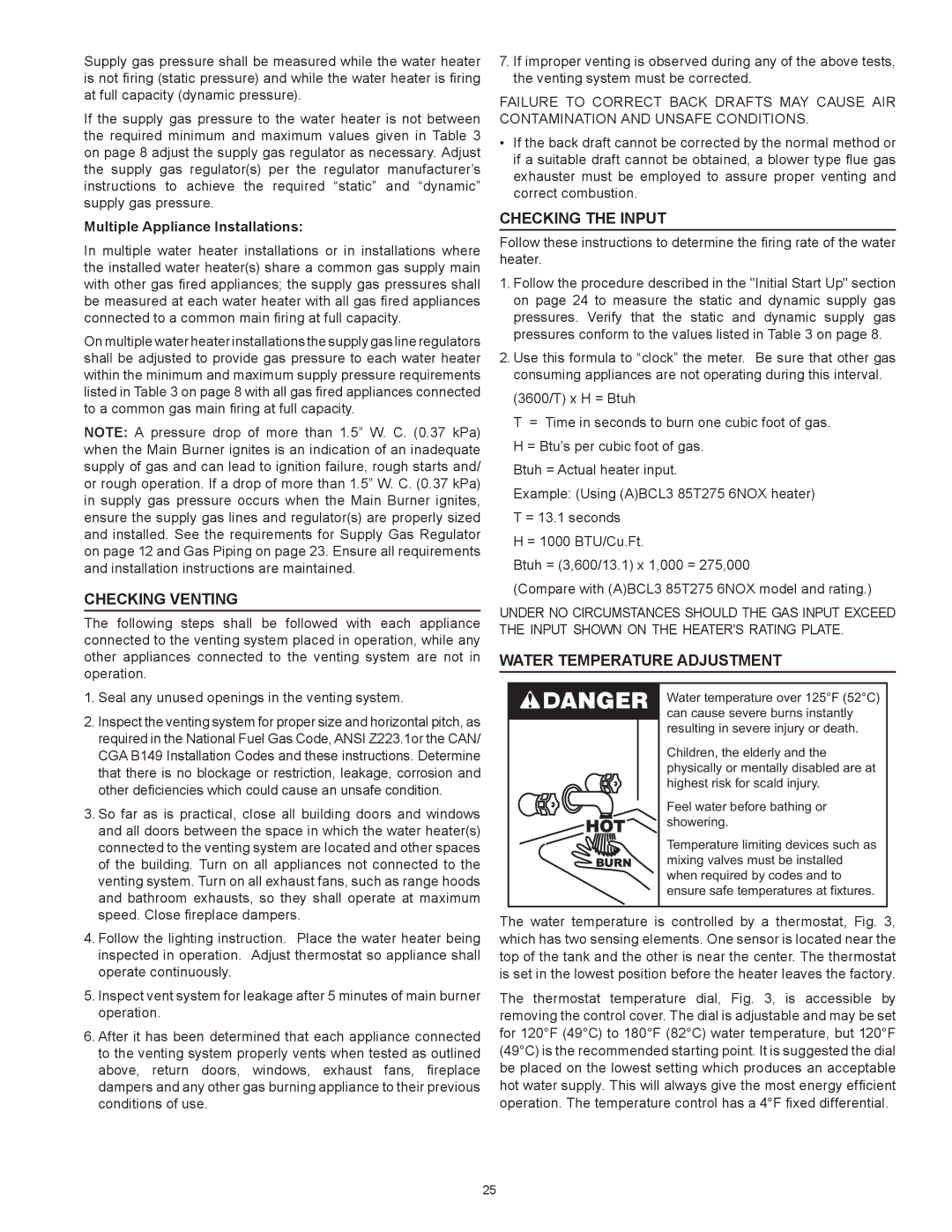BCL3 95T199 6NOX, BCL3 85T390 6NOX, BCL3 85T275 6NOX specifications
American Water Heater Company has been a leader in the production of high-quality water heaters for residential and commercial use. Among their acclaimed collection are three notable models: the BCL3 85T275 6NOX, BCL3 85T390 6NOX, and BCL3 95T199 6NOX. Each of these models is meticulously designed, providing efficient heating solutions while prioritizing safety and environmental responsibility.The BCL3 85T275 6NOX is an advanced model that offers a remarkable 275,000 BTU output, making it suitable for a variety of applications, from single-family homes to larger commercial settings. This unit features a powerful water heating capacity and is equipped with a robust heat exchanger that maximizes thermal efficiency. One of its key technological innovations is the low nitrogen oxide (NOX) emissions system, which significantly reduces harmful emissions, thereby complying with stringent environmental standards.
Similarly, the BCL3 85T390 6NOX enhances performance with a higher BTU output of 390,000. This capacity allows it to effectively serve larger facilities with higher demand for hot water. The technology behind this model includes an automatic flue damper that optimizes energy use by adjusting the airflow, resulting in improved combustion efficiency. Additionally, its durable construction ensures long service life, catering to the needs of both residential users and commercial operations.
The BCL3 95T199 6NOX, with its 199,000 BTU capacity, combines efficiency with versatility. This unit is designed for a wide range of water heating needs, providing an excellent option for both medium-sized homes and smaller commercial setups. Its unique design incorporates advanced insulation materials that help retain heat longer, thereby enhancing overall efficiency. Like its counterparts, this model is equipped with advanced NOX reduction technology, which makes it an environmentally friendly choice.
All three models share a common theme of reliability and efficiency. Their advanced control systems enable precise temperature management, allowing users to set their desired hot water temperatures with ease. Furthermore, each unit is designed with safety features such as a high-temperature limit switch and electronic ignition, ensuring safe operation.
In conclusion, the American Water Heater BCL3 series — featuring the BCL3 85T275 6NOX, BCL3 85T390 6NOX, and BCL3 95T199 6NOX — showcases the company's commitment to innovation, quality, and environmental stewardship. These models not only meet the demanding needs of consumers but also contribute to a more sustainable future with their low emissions and efficient systems. Whether for residential or commercial use, they are designed to deliver reliable performance year after year.

